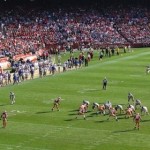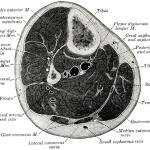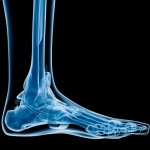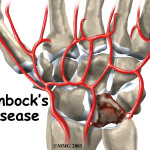INTRODUCTION
Plantar heel pain, or commonly plantar fasciitis, is a very common clinical presentation. In an athletic population of runners, plantar heel pain has been shown to account for as much as 8% of injuries (Taunton et al 2002). Thus, sports physiotherapists should be aware of the most appropriate management techniques for this condition.
I am sure that many of you will be aware of the clinical practice guidelines for heel pain/plantar fasciitis published in 2008 (McPoil et al 2008). Whilst this article provides support and makes recommendations for the use of many conservative interventions, such as orthoses, low dye taping, gastroc-soleus stretching, it does not find strong support for the use of manual therapies. This is due to a lack of high quality randomised controlled trials. However, more recently support for the effectiveness of myofascial trigger point therapy has come from a randomised controlled trial (Renan-Ordine et al 2011).
THE USE OF TRIGGER POINT THERAPY FOR PLANTAR HEEL PAIN
The study randomised sixty patients with a diagnosis of unilateral plantar heel pain into two treatment groups who either received a self stretching program or a self stretching combined with trigger point manual therapy (Renan-Ordine et al 2011). The patients attended the clinic 4 days per week for 4 weeks. The treatment regime is described below
The stretching program included the following exercises:
- Standing Gastrocnemius Stretches
- Standing Soleus Stretches
- Seat Plantar Fascia Stretches
Each were held for 20 seconds, with 20 second rest periods for a total of 3 minutes per exercise.
GASTROCNEMIUS AND SOLEUS STRETCH EXAMPLE
PLANTAR FASCIA STRETCH EXAMPLE
The myofascial trigger point therapy technique utilised in the article looks like THIS and THIS!
SO, WHAT HAPPENED?
At the 4-week follow up the patients that underwent the combination of trigger point manual therapy and stretching showed a significantly greater improvement in physical function and a greater reduction in pain. Whilst the authors were not quick to make a judgement on the mechanisms through which the addition of trigger point therapy lead to enhanced outcomes, I am sure that we all have our own theories (as do they). Regardless, the efficacy speaks for itself.
CLINICAL IMPLICATIONS
- This new research adds research support to what many clinicians already knew – the addition of manual techniques aimed at gastrocnemius improves outcomes for plantar heel pain patients.
- For those who do not use already use these manual techniques – they have the potential to enhance your patients outcomes.
- Remember the research (…always has…) limitations. There is a lack of control group. Also, there is no evidence of the optimal manual technique (yet) i.e. myofascial release, trigger point etc.
Do you use manual techniques for your plantar heel pain patients? Be sure to let me know in the comments or catch me on Facebook or Twitter
If you require any sports physiotherapy products be sure check out PhysioSupplies (AUS) or MedEx Supply (Worldwide)
REFERENCES
Renan-Ordine R, Alburquerque-Sendin F, De Souze DPR, Cleland JA, Fernandez-De-Las-Penas C. Effectiveness of Myofascial Trigger Point Manual Therapy Combined With a Self-Stretching Protocol for the Management of Plantar Heel Pain: A Randomized Controlled Trial. J Orthop Sports Phys Ther. 2011;41(2):43-51
Taunton JE, Ryan MB, Clement DB, McKenzie DC, Lloyd-Smith DR, Zumbo BD. A retrospective case-control analysis of 2002 running injuries. Br J Sports Med. 2002;36:95-101
McPoil TG, Martin RL, Cornwall MW, Wukich DK, Irrgang JJ, Godges JJ. Heel pain—plantar fasciitis: clinical practice guidelines linked to the international classification of function, disability, and health from the orthopaedic section of the American Physical Therapy Association. J Orthop Sports Phys Ther. 2008;38:A1-A18.
Related Posts
Comments










A home option for patients to utilise this technique is the use of a foam roller for self myofascial release. This can be used between treatments to improve the mobility of the gastrocsoleus myofascial structures.
Fantastic anecdotal results!